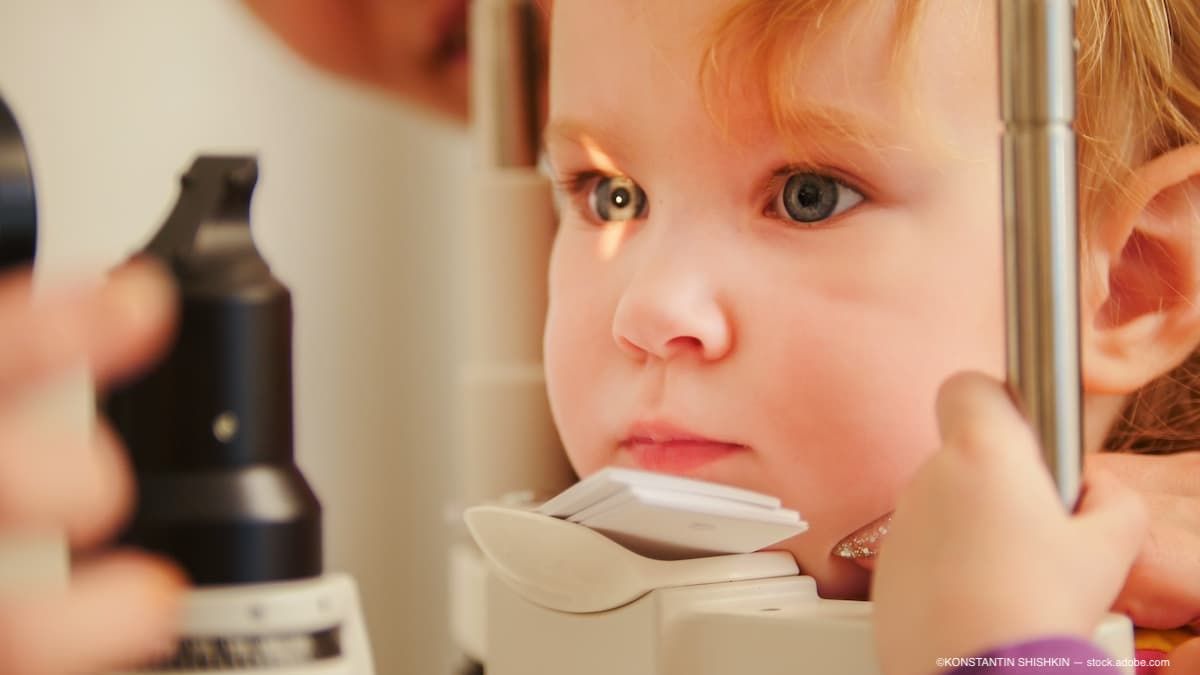News
Article
Keratoconus in a pediatric population has higher prevalence than expected
Author(s):
Early keratoconus screening advocated
(Image Credit: AdobeStock/KONSTANTIN SHISHKIN)

Increased vigilance regarding the potential for development of keratoconus in pediatric patients is needed to ensure faster intervention, with the goal of preserving vision. A recent study1 emphasized the importance of early sensitive screening of these young patients, according to researchers from the International Keratoconus Academy of Eye Care Professionals (IKA).
Topography study
The investigators conducted a prospective observational study based on Scheimpflug corneal tomography that included patients who ranged in age from 3 to 18 years. A total of 2,007 of 2,206 patients were included after duplicate and poor-quality scans were eliminated.
Outcomes from Scheimpflug tomography scans (Pentacam HR, OCULUS Optikgerate GmbH) yielded the following measurements obtained from the Belin Ambrósio Enhanced Ectasia analysis software (BAD3): The BAD final diopter (D) value and the back corneal surface elevation value measured at the thinnest point.
The investigators used the following tomographic criteria to differentiate subjects without keratoconus from those who were keratoconus suspects and those with definite keratoconus. Those without keratoconus had a final D measurement of less than 2.00 bilaterally; those who were categorized as keratoconus suspects had a final D measurement of 2.00 or higher but below 3.00 in combination with a back elevation at the thinnest point of 18 μm or higher for myopia and 28 μm or higher for hyperopia/mixed astigmatism in at least 1 eye; and those with definite keratoconus had a final D measurement of 3.00 or higher with a back elevation at the thinnest point of 18 μm or higher for myopia or 28 μm or higher for hyperopia/mixed astigmatism in at least 1 eye.
Jennifer Harthan, OD, FAAO, FSLS, first author of the study, and colleagues reported that among the 2,007 subjects, 6 were classified as having keratoconus for a prevalence of 1:334 and 3 were keratoconus suspects for a prevalence of 1:669. When the 2 were combined, the total prevalence of keratoconus suspects and definite keratoconus was 1:223.
The results indicated that the prevalence of keratoconus in children is higher than previously reported. “The results emphasize the importance of sensitive screening for keratoconus at its earliest manifestation as standard in pediatric comprehensive eye examinations,” the authors concluded.
Clinicians overwhelmingly support early intervention in pediatric patients.
S. Barry Eiden, OD, FAAO, FSLS, the CEO and co-founder of IKA said, “The outcomes of this US-based study confirm the results from other contemporary worldwide prevalence studies of keratoconus that indicate a much higher prevalence of the disease than formerly thought. Its impact should be significant in terms of the need for routine screening for keratoconus as part of comprehensive pediatric eye care. Considering our ability to control progression of keratoconus with treatments such as corneal crosslinking, early diagnosis can result in preservation of vision.”
Steven A. Greenstein, MD, The Cornea and Laser Eye Institute—CLEI Center for Keratoconus and Medical Advisory Board member of IKA, commented, “The results of this study validate our clinical observations, underscoring a greater prevalence of keratoconus than previously believed. Advanced imaging technologies like Scheimpflug tomography, as used in this study, enable us to detect even subtle cases of keratoconus and diagnose the condition at an earlier stage, ideally before the onset of visual impairment. This is especially important for our pediatric patients, where early intervention with corneal crosslinking has demonstrated long-term corneal stability in a majority of keratoconus patients.”
Reference:
Harthan JS, Gelles JD, Block SS, Tulo W, Morgenstern AS, Su B, Chung D, Austin Y, Greenstein SA, Hersh PA, and Eiden SB. Prevalence of keratoconus based on Scheimpflug corneal tomography metrics in a pediatric population from a Chicago-based school age vision clinic. Eye Contact Lens. 2024; published online Feb 7 ahead of print; doi:10.1097/ICL.0000000000001072
Newsletter
Don’t miss out—get Ophthalmology Times updates on the latest clinical advancements and expert interviews, straight to your inbox.





